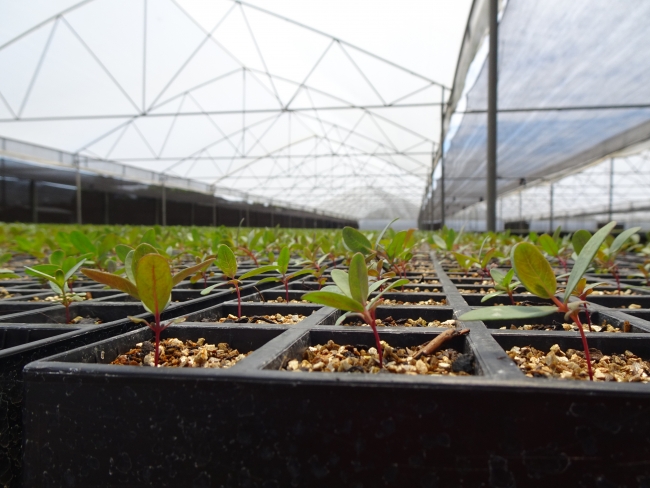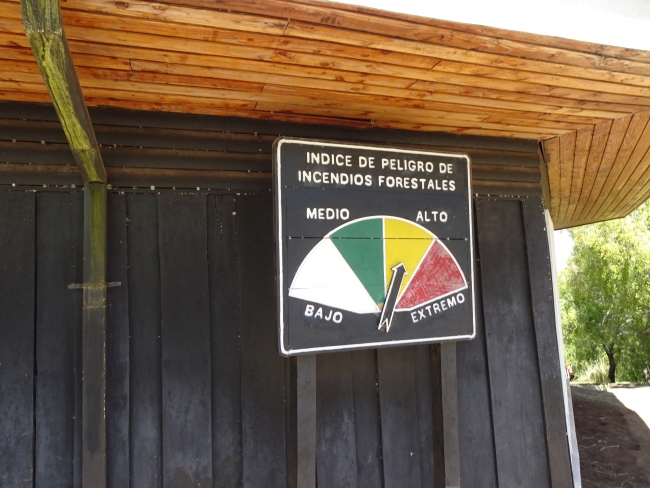Planted forest : The big opportunity for forest recovery in Chile and Uruguay

The Chilean forest sector has a proven track record of combating the historic soil degradation and widespread deforestation problems of the country, due in part to its industrial planted forest model. Today, three private companies own over half of the country's planted forests, resulting in an industry concentration that clearly differs from the path followed by other neighbouring countries which are equally dependant on planted forests including exotic species, such as the policy of Uruguay. These differing policies on forest recovery lead to different consequences for tribal and landowner disputes, and for the harmonisation of planted and natural forests.
Chile: Industry-led planted forests as a response to erosion problems linked to a vast natural forest
As in many European countries, the history of forest plantations in Chile began with overexploitation of resources and problems of erosion or soil quality. Indeed, since the settlers massively exploited primary forests and set up extensive agriculture in areas where rainfall can often exceed 2000 mm per year, it is not surprising that erodible volcanic soils generate problems of stability and water quality. In a liberal country like Chile, it follows that the state trusted the private forestry companies to ensure the reforestation of the country.

Today, three private companies (Arauco, CMPC, and to a lesser extent, Masisa) own more than half of the country's planted forests, which are made up of 57% radiata pine and 35% eucalyptus stands (E. globulus and E. nitens). Planted forests represent only 2.4 million hectares grouped in three provinces in the centre of the country, compared with 14.6 million hectares covered by natural forests [1]. However, planted forests alone produce 99% of the wood extracted in Chile.
The development of this forest has been accompanied by strong industrial development, particularly cellulose production, part of which is exported to other countries, but also wood production for the construction sector. All these companies practice intensive management with soil preparation, fertilization and use of improved genetic material, but without using Genetically Modified Organisms (GMOs), thus complying with the requirements of the Forest Stewardship Council (FSC) and Programme for the Endorsement of Forest Certification (PEFC). This labelling is important to preserve access to the foreign market because the sector represents 8.7% of exports, 1.4% of jobs and 2% of the country's GDP.

Planting activity revised as a result of social conflicts and risk management issues
While the area of planted forest grew rapidly until 2012, after this date the new forest legislation was less favourable, especially for small operators. Notably, by limiting the aid to planting and adding constraints on inheritance, land that can be reforested becomes rarer. Relatively serious social crises, brought about by the cohabitation of profitable companies and the Mapuche indigenous population claiming rights over these territories, forced the state to put in place a new policy in 2015 focused on the conservation of natural forests. This socio-political context has led large forest companies to become fully-fledged actors in rural development by supporting social and economic initiatives on the periphery of forest lands, and by funding the establishment of local fire prevention committees and strategies.
Private companies are also involved in protecting forests just like the state. Thus, in the province of La Araucanía and Biobío, the means of wildfire detection (towers and cameras) and firefighting (the number of trucks, helicopters, planes and firefighters on the ground) belonging to Arauco and CMPC are equivalent to those of the state, and therefore require a strong coordination of resources and very precise rules of intervention to ensure optimal management of fire containment. While the areas burned had been stable since the 1980s despite a slight increase in the number of wildfires, following exceptional weather conditions in 2017, wildfires burned 467,537 ha of Chilean territory including 77,131 ha of natural forest and 280,555 ha of planted forest [2]. To prevent wildfire spread all firefighter units, regardless of their ownership, must defend every territory, no matter who it belongs to.

No major phytosanitary crises are currently affecting the exotic forests, and the main problem of the wood wasp (Sirex noctilio) is the subject of biological controls. This relative sanitary tranquillity justifies strong border protection to prevent the entry of any non-certified raw material. In the face of major risks like the big wildfires in 2017, the question of insurance is fundamental for investors. A review of insurers' intervention procedures is underway to simplify reimbursement procedures and the assessment of the risk covered, while speeding up the cleaning of plots to prevent insect attacks following fires.
This industrial planted forest economy has become a cornerstone of the country's national GDP and one of its largest export sectors, including investments in neighbouring countries such as Brazil, Argentina and Uruguay.
Uruguay: Land use planning and sustainable plantations
Whilst on the subject of Uruguay, it must be said that the development of forests there has been somewhat different. Although it is also based on plantations, the industrial concentration is less important than in Chile because the local political system allows the establishment of management contracts (farmland type) with the landowners. The administration has established a map of forest potential which shows that the areas that are being reforested are, first and foremost, those with less agricultural interest and which have the greatest potential for forest production. These potential areas for reforestation benefit from aids and tax exemptions. This policy allowed the forest cover rate to increase from 4.5% in 1990 to 10.5% in 2016. It is not uncommon in the north of the country to find stands producing 30 to 40 m3 / ha / year with revolutions of 15 to 25 years depending on whether it is eucalyptus (E. grandis) or pine (Pinus taeda and P. elliottii).
One of the factors limiting the forest sector business development in Uruguay is the capacity for transformation and the quality of infrastructure in the north of the country. A third pulp mill is currently being studied to complement the two existing ones, capable of processing 10 million m3 of PEFC and FSC certified wood, mainly for the European and Chinese markets.
The development of this sector, which provides 25,000 direct jobs and is done without detriment to native forests, is encouraged by the state. The result in terms of surface area means that natural forests still represent 850,000 ha of the territory, whereas forest plantations now cover 1,200,000 ha.
The forestry sector is now a major contributor to the economy of both countries. While the Chilean forestry companies have been acting to achieve forest recovery - significantly contributing to the country’s economic growth as their products are sold worldwide-, Uruguay has followed a forestry policy that we can identify as a clearly sustainable state policy. Nonetheless, further developments are needed to take full advantage, and in a harmonious way, of all the services provided by the forest ecosystem – including both planted and natural forests – in the two countries.
This information was collected during a mission co-organized by the MISSO and INTERCO cooperation agency of the New Aquitaine region, including meetings with the following organizations based in Chile and Uruguay: CONAF, Masisa, Universidad del Bío-Bío, ARAUCO, CORMA, Forestal Mininco (CMPC), HDI Seguros, Universidad Autónoma de Chile, and Voipir in Chile, as well as SPF and UPM in Uruguay.
Photos by : Christophe Orazio (EFIPLANT)


